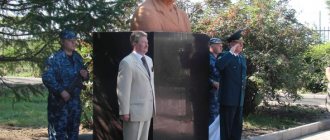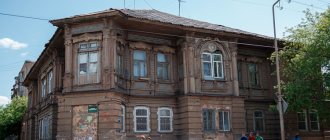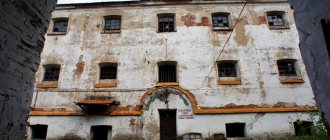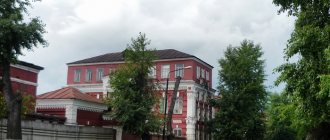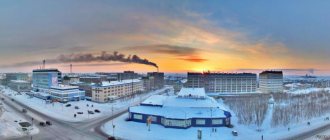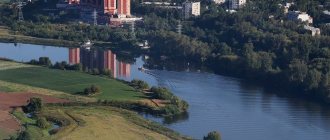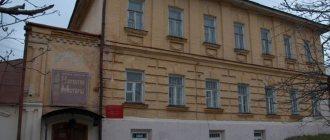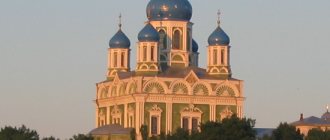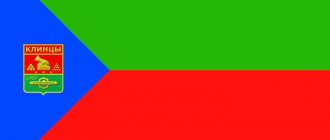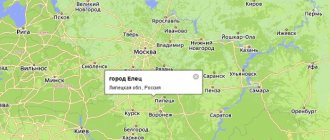In this text we will talk about the city of Orel and its attractions, photos with descriptions of the objects will be presented.
In September 1566, by decree of Ivan the Terrible, the city of Orel was formed on both banks of the Ob River, on the Central Russian Upland, which was initially a defensive fortress.
Today it is an industrial city with a rich history. Every year more and more tourists come here who want to get acquainted with its history and modern life.
Where is Orel located?
It is located 365 km from Moscow in the European part of Russia. The total area is more than 125 square meters. km. Divided into 4 administrative districts. Population - about 325 thousand people.
The city of Orel was founded at the confluence of the Oka and Orlik rivers in 1566 as a military fortress
Since 2007, Oryol has been a city of military glory. The post of mayor has been held by Vasily Fedorovich Novikov since 2015.
Fans of northern beauties will be interested in an article about the sights of Murmansk.
Don't disappear, legend!
What about gift products based on an unforgettable image? And what about photographs in which a proud hero, even if not very graceful in appearance, is captured from a variety of angles? What about mugs with a talking picture? And what about the countless number of magnets and decorative plates from which a formidable predator looks?
Local designers objected: all this cannot be compared with the shortcomings of the sculpture. The statue of an eagle in Orel - this unforgettable crown of “straw creativity” - not only spoils the view of the square, but interferes with the view: because of it it is impossible to admire the Palace of Culture of Railway Workers. The miracle simply needs to be “deported”! Among the opponents there were also those who argued: a more aesthetic sign would not fit into the architectural appearance of the place where the flower bed was originally intended.
Attractions
So, what to see in Orel? On the territory of the city of Oryol there are many interesting attractions that every guest or tourist should visit if he wants to get to know the history of the area better. These are various churches and cathedrals, cultural and architectural monuments, museums and other urban and natural sites, a description of which is presented below.
Churches, cathedrals and monasteries
These include:
- Epiphany Cathedral. Bogoyavlenskaya Square, 1.
Construction began in 1641. It took about five years. Subsequently, the temple was reconstructed many times, changing its appearance beyond recognition. In 1908, a bell tower was built nearby, which is depicted in many photographs. The belfry was destroyed during wartime. In those same years, the temple became the cathedral of the Oryol diocese. Closed in 1962.
It resumed its work in 1994 and was consecrated 2 years later. Divine services are held here daily;
- Iverskaya Church. St. Privokzalnaya, 9.
It was founded in the fall of 1899 in memory of the coronation of Emperor Nicholas II. After the revolution it was closed to parishioners. Over the years, a clinic and a railway school operated within its walls.
During the war years, the church was almost completely destroyed. Restoration began in the 90s of the last century. In 2013, the iconostasis was updated. There is a church library inside and a Sunday school;
- Trinity Church. St. Leskova, 17
Another name is Holy Trinity Church. It was built in 1828 with donations from local residents near the city cemetery. In the same year it was consecrated. It was closed in 1941, but resumed operation 4 years later. In 1954, a memorial plaque to the hero of the Patriotic War of 1812 A.P. was installed in the western wall. Ermolov, who was buried near the temple in 1849.
The restored altar was painted in 1979. In the 90s, a chapel appeared nearby, which was consecrated in honor of Nicholas of Myra. Divine services are held daily inside the temple;
- Smolensk Church. St. Normandy-Neman, 27.
It was founded in the second half of the 18th century. Rebuilt several times. It received its modern appearance in 1889, and the church was consecrated 2 years later. An elementary school for low-income parishioners was opened within its walls.
During the war there was a bomb shelter here. Then, for a long time, the Smolensk Church stood in desolation; until the mid-90s, there was a bakery inside it. Since 1999 it has been open to parishioners again. The iconostasis was updated in 2015;
- Church of the Intercession. Peace Square, 1.
The first wooden church on this site appeared in the middle of the 18th century. In 1847, a stone church was built here. Two years later there was a strong fire that largely destroyed it. For almost 40 years the church looked like forgotten ruins, and in 1885 restoration began. In 1904 it was consecrated.
At the beginning of the Soviet period it became a cathedral, but already in 1938 the Pokrovsk Church was closed. At the end of the 40s it was blown up. Today, in its place is the Oryol Central Department Store, the building of which is not a cultural heritage;
- St. George's Church. St. Lenina, 22.
Built in the 16th century. In 1888, several projects appeared, based on which it was planned to expand it. In 1943, the building was significantly damaged. Immediately after the war it was closed. Later, the church was reconstructed and converted into the Pobeda cinema;
- Cathedral of the Archangel Michael. Mikhailo-Arkhangelsky lane, 20.
The second name is Uspensky. Construction was completed in 1818. After 90 years, the iconostasis was replaced, and other changes took place, including the expansion of the cathedral's territorial possessions. Since 1932, the cathedral has been used as a warehouse. The restoration of its activity as an Orthodox church dates back to 1989.
Now on its territory there is a small chapel - a building of the first half of the 19th century;
- Church of John the Baptist. St. Karachevskaya, 97a.
Located near the Baptist Cemetery. Construction was completed in 1772. For a long time, a shelter operated within its walls. Closed in 1938.
Reopened in 1962. Divine services are held daily;
- Holy Dormition Monastery. St. Ermolova, 13a.
It was opened under its modern name in 1684. By the end of the 19th century, it included several additional buildings, including residential ones, most of which have survived to this day;
This is interesting: the writer G.I. Chernyshev is buried on the territory of the Orthodox complex. The entrance to the monastery territory is from 60 Let Oktyabrya Street.
- Holy Vvedensky Women's Monastery. St. 1st Kurskaya, 92.
Founded in 1686. In 1843 it was badly damaged by fire. After 5 years it resumed its work, and in 1922 it was closed. A small settlement of railway workers was founded on its territory. Monastic life within him was revived only in 1995.
Today it includes two churches and a chapel named after Elisaveta Feodorovna. It is an object of cultural heritage of the Russian Federation;
- Nikolo-Peskovsky Church. St. Normandy-Neman, 73a.
Founded in 1790. For a long time it was used as a sewing factory and workshop. In 1995 it came under the control of the Orthodox community;
Please note: the temple got its name due to the fact that construction was carried out on sandy soil.
- Boris and Gleb Cathedral. St. Saltykova-Shchedrina, 37.
Built in 1781 near the Borisoglebsky cemetery with the money of an Oryol landowner. Turgenev was baptized here in 1818. At various times, the temple was visited by kings from the Romanov dynasty. At the end of 1928 it was closed. It burned down during wartime. Nowadays there is a hospital in its place;
- Peter and Paul Cathedral. It was founded in 1797. Construction lasted about 45 years. Closed in 1923, a documentary archive was opened inside it. In 1940 the building was blown up.
During the Soviet period, a city library was built in its place, which received the name of N. Krupskaya. Since 1992, it has been renamed the library of the Orel writer Ivan Bunin;
Please note: for many years the temple was the cathedral of the Oryol diocese.
- Akhtyrsky Cathedral. St. August 5, 18.
Before the construction of the Akhtyrsky Cathedral on this site, in the 16th century there was a wooden Pyatnitskaya Church here. The cathedral building, which has survived to this day, was built in 1775.
With the passage of time, changes and amendments were made both to the interior decoration of the temple and to its external appearance. After the revolution it was used as a granary. Opened in the spring of 1942.
Monuments and structures
Now let’s look at the monuments of the city of Orel with photos and descriptions:
- Red Bridge.
Crosses the Ob River. The opening of the first bridge on this site took place in February 1879.
Did you know that: the route of one of the first Russian trams passed along the Red Bridge. It received its name in 1919.
During the war it was destroyed - it was blown up by the Germans. The modern bridge appeared here after a two-span steel beam was installed on the surviving supports. It was put into operation in 1950;
- Arrow of Oka and Orlik.
It is located on a place considered to be the center of the first settlements on this land. It is a small square with a memorial multi-meter stele, around which there are flower beds, and there is a picturesque bridge nearby.
The main obelisk of the composition was installed in 1966;
- Monument to I.A. Bunin. Proletarian Mountain.
The bronze sculpture of the writer appeared in the fall of 1995. The authors are architect R. I. Semerdzhiev and sculptor V. M. Klykov.
Dedicated to the memory of Ivan Alekseevich, who spent his childhood and youth in the Oryol province;
- Monument to aircraft designer N.N. Polikarpov. St. Moscow.
It was installed at this location in the spring of 1958. It is a bronze sculpture of a seated Nikolai Nikolaevich, who holds a model of an airplane in his left hand.
The authors were architect G. A. Zakharov and sculptor G. I. Kepinov;
- Monument to Ivan the Terrible.
Opened October 14, 2016. This is the first monument to Tsar Ivan the Terrible on the territory of the country.
The process of creating the sculpture was supervised by the Honored Artist of Russia - O. Molchanov;
It is important to know: it was Ivan the Terrible who founded the fortress city of Orel.
- Monument to I.S. Turgenev.
Opened in the fall of 1968 next to the central park of culture and recreation.
One of the authors was the famous sculptor G. P. Bessarabsky. The installation of the monument is timed to coincide with the 150th birthday of the Eagle;
- Monument to General A.P. Ermolov.
Dedicated to a military leader who took part in several wars for the Russian Empire. Opened in 2012.
The height of the monument is almost 5.5 m. The author was the sculptor R. R. Yusupov;
- Monument to N.L. Leskov.
Made of bronze and gray granite. It was installed in 1981 on the river bank.
Around the sculpture of a seated writer there are 5 one and a half meter columns, which depict the main characters of several literary works of Nikolai Semenovich;
House of Soviets. Pl. Lenina, 1.
Located on the main square of the city. The building was built in 1961.
The authors were architects from the Legiprokommunstroy Institute; Houses of Soviets were later built according to identical designs in several other regions of the USSR. Nearby is a sculpture of the leader of the world proletariat - V.I. Lenin;
- Railway station building. Pl. Privokzalnaya, 1.
The station opened in 1868, when the first train arrived. The length of the platform is approximately 595 meters. During the war, the railway station was destroyed; restoration began in 1945.
The modern building was erected in 1951 according to the design of architect S. A. Mkhitaryan.
Unusual sculptural compositions
These include:
- Founding Eagle. Kromskoe highway, 4
The height of the bronze bird is 5 meters, and there are two armed archers near it. The creation and installation of the sculptural composition is timed to coincide with the 450th anniversary of the city. He quickly won the love of the locals. You can often see this composition in photos.
Claims to be one of the Eagle's calling cards. If you are faced with the question of what to see in Orel in 1 day, then do not forget about this interesting sculpture;
- Family.
Located opposite the Grinn shopping center since 2013.
It is a bronze sculpture of a father, mother and their two small children, who are enthusiastically talking about something while walking, after shopping, holding hands;
- Tour guide.
The only monument in the world dedicated to representatives of this profession.
The bronze sculpture was installed in early August 2016;
- Train station for tourists.
Symbol of hospitality.
The sculptural composition includes a real steam locomotive and several bronze people, including the driver, a flirtatious lady passenger and a conductor on the platform. Appeared in 2013;
- Official and Entrepreneur.
The idea of creating such a sculpture came to local businessmen in early 2012. The author of the project was Yu. Kireev. The opening took place in October of the same year in the business district of Orel.
The idea is to remind everyone, not just officials and entrepreneurs, that time flies inexorably and they need to act, and not give in to long thoughts.
Parks and squares
There are several natural sites in the city that are also worth paying attention to. For example:
- Park of culture and recreation. St. Maxim Gorky, 36.
It was established on the left bank of the Oka River in 1823. In Soviet times, it was reconstructed, alleys and fountains appeared here, and the city authorities installed a Ferris wheel.
It is a center for various events and city festivals. The park contains in its natural collection numerous unique plants, some of which were planted here before the start of the Great Patriotic War;
- Tankmen's Square. Pl. Mira.
It was founded on August 7, 1943, immediately after the liberation of the city from the invaders.
The reason was the installation at the site of a bloody battle of a destroyed T-70 tank from the company of Art. Lieutenant S. Marchenko. Later, the Eternal Flame was lit and an alley was built;
It is worth noting: in the 18th century this place was called “Ilyinskaya Square”. In the 60s the tank was replaced. And in May 2016, a monument to Marshal Baghramyan was erected in the park.
- Noble Nest.
The park was founded in 1903. It is a literary and cultural reserve. Located on the left bank of the Orlik River. In the last century, musical concerts and dance evenings were held on its territory, amateur and professional performances were staged. The reserve is mentioned in the works of Bunin, Leskov and Turgenev.
This beautiful park is a favorite walking place for locals and city guests. The “Turgenev gazebo” is considered its calling card.
Take note: inside the park area there is a boat pier where you can rent one of the presented types of water transport for a river trip.
Museums
Interesting places in Orel also include museums. They contain unique, historical and other collections containing unusual exhibits.
Every tourist is recommended to visit:
- Museum of Local Lore. St. Living room, 2.
The opening took place in 1897. Its appearance was preceded by the creation of a major exhibition, called “distinctive features of our province” in 1837, which was timed to coincide with the arrival of Alexander II in Oryol. The museum is one of the oldest in Russia. Unique antiques are collected here. Having visited the museum, you can understand what the city of Oryol and its inhabitants are famous for. In the 80s of the last century, on the basis of the local history museum, several of its branches were opened throughout the region.
Today, the museum’s collection contains over 10 thousand exhibits; they are located in halls dedicated to various stages of development of the region. Visitors can view the archaeological and ethnographic collections of the museum, a hall with ceramic figures, a collection of peasant costumes, paintings, faleristics and others. The fund increases annually;
Please note: the museum is open seven days a week.
- Museum-diorama. St. Normandy-Neman, 1.
Another name is the Military History Museum. Opened in August 1983. The first exhibition was the diorama “Oryol offensive operation”. The museum's exhibition, including a number of dioramas, is divided into several different periods and stages of the development of the city and its region.
A significant part is devoted to wartime, the feat of local heroes, the liberation of the Oryol region from the Germans;
Please note: visitors are given a choice of 3 types of excursions: sightseeing, “Operation Kutuzov” and “Breakthrough of the enemy’s defenses near the village of Maloe Izmailovo”. The fund contains several personal belongings of Marshal Vasilevsky.
- Art Museum. St. Oktyabrskaya, 29.
Unique art collections have been stored in the building of the former House of Political Education since 1959. Previously, the museum was called the Oryol Art Gallery and was one of the branches of the Museum of the Local Region. The greatest contribution to its development was made by Oryol opera singer N.N. Nikolaev, who donated over 200 units to the fund. artistic works.
Informative lectures on fine arts and theme evenings are often held here, which anyone can attend;
Please note: You can take a visual tour on the museum's official website.
- Museum of I.S. Turgenev. St. Turgeneva, 11.
The museum is located in a building that previously belonged to a distant relative of the writer. At the end of November 1918, the museum opened. During the war years, the collections stored within its walls miraculously survived, some were partially taken out. The second discovery took place at the end of winter 1944.
Today there is a permanent exhibition “Turgenev. Life for art." Visitors can see objects of material culture from the century before last and books from Ivan Sergeevich’s personal library. Temporary exhibitions are constantly changing, which are in one way or another connected with his life and work;
It’s worth considering: Friday is a day off at the museum.
- House-Museum of N.L. Leskova. St. Oktyabrskaya, 9.
The opening took place in mid-summer 1974. The first exhibition, called “In the World of Leskov,” which tells about the life and work of the writer, is still relevant.
Here are collected his personal belongings, photographs and various documents related to Nikolai Semenovich. The house-museum consists of six halls;
- House-Museum of I.A. Bunina. Georgievsky lane, 1.
Opening time: December 1991. The Literary Memorial Museum was founded precisely in the area where the first Russian Nobel laureate in literature lived for several years. The main exhibition features exhibits that introduce visitors to the life, stages of creativity and everyday life of the writer.
The heart of the museum is Bunin’s reconstructed Parisian office.
Please note: there are personal belongings of Ivan Alekseevich here, including a cigarette holder, briefcase, inkwell, and furniture that he used is also stored. All guests are invited to watch a documentary about the life of the writer during the excursion.
I feel sorry for the bird
However, let’s return to the topic “Eagle Monuments” (the description of which by local guides is fantastic). The bronze flyer on the ball near the station was created according to the design of the sculptor from Kursk Yuri Kireev. Now it is the pride of the city. It was as if there had been no months when black clouds of danger hung over the willow “old man”, and the inhabitants of the region stirred up in a single wave of protest.
I remember that the old eagle monument in Orel caused a flurry of discussions on social networks. Excited people sounded the alarm: “The feathered Central Russian beauty is very popular among tourists! In terms of popularity, it is ahead of the only monument in Russia dedicated to the writer Nikolai Leskov, a native of the Oryol province! And suddenly remove it?! Never!"
Famous people of Orel
Monument to A.A. Fet in Orel
Which Oryol residents became known far beyond the borders of their native land?
Here are just a few of them:
- Ivan Sergeevich Turgenev. The author of literary works that are known all over the world spent his childhood here, including “Fathers and Sons” and “Mumu”;
- Afanasy Afanasyevich Fet. The childhood of the poet, who wrote hundreds of poems, also passed within the Oryol province;
- Naryshkin Alexander Alekseevich. He was an outstanding statesman. Born in 1837 in the family of a retired warrant officer in the Oryol province. He was an ardent opponent of the Russian Empire and monarchy;
- Kurnakov Andrey Ilyich. People's Artist of the USSR was born on the outskirts of the city of Orel in 1916. Participated in the Great Patriotic War. Later, the small Motherland will find many echoes in the artist’s work;
- Zyuganov Gennady Andreevich. Born in the Oryol region in 1944. Before moving to Moscow, he actively participated in the life of the city.
Vasily, where was the Muse?
The former calling card of the settlement was perceived differently by viewers. The large-headed bird made of willow twigs, as if condescending to human vanity, delighted some with its greatness, and outraged others with its strange appearance. The latter could not understand: why is the creepy-looking crow considered to be part of the proud family of hawks? Should she meet and see off guests of a region covered in military and labor glory? Whatever they say, the unusual-looking symbol was a success.
The controversial monument to the eagle in Orel was created by the master of topiary sculpture Vasily Antropov, who at one time moved here from the capital of Khakassia. The Abakan resident is the “parent” of another city attraction – the elephants in the city park. The kids are delighted with the green giants. The management of the institution even intended to issue them “passports” (install signs with their nicknames).
There were popular wishes to cover the surrounding area with decorative stones instead of vulnerable lawn grass. While, in an impulse to get closer to the figures, boys and girls are trampling the living carpet.
Photo gallery
Turgenev oak
Like the organizers of the European Tree of the Year competition, we decided to pay tribute to the Oak, because morally it is still with us. Moreover, voices about perpetuating the memory of the “first tree” of the country are becoming louder.
So, according to legend, almost 200 years ago, Ivan Turgenev, as a teenager, planted an oak tree on the territory of the family estate, which over time turned into a long-liver. It was not an acorn, but a seedling that was planted, so some problems arose in calculating the age of the tree, but experts still managed to establish accurate figures. He will turn 198 years old in 2022.
The writer himself mentioned this tree more than once in his work. And when Ivan Sergeevich was ill, he wrote to his friend Polonsky: “When you are in Spassky, bow from me to the house, the garden, my young oak tree, bow to the Motherland, which I will probably never see again.”
For Turgenev, this tree stood in the same row as the house and the Motherland.
